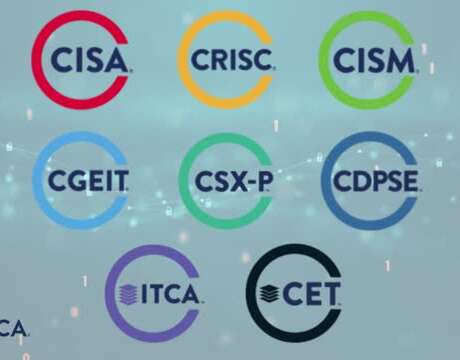Description
🔐 Network Security Training: Detailed Overview
🎯 Purpose of Network Security Training
Network security training equips individuals with the skills and knowledge needed to design, implement, monitor, and defend secure networks. It addresses threats such as unauthorized access, data breaches, DDoS attacks, malware, and insider threats by focusing on protocols, architectures, tools, and best practices.
🧠 Learning Objectives
By the end of network security training, participants should be able to:
- Understand fundamental networking and security concepts.
- Identify and respond to network-based threats and vulnerabilities.
- Configure firewalls, intrusion detection/prevention systems (IDS/IPS), and VPNs.
- Secure wireless and wired networks.
- Perform network traffic analysis and incident response.
- Implement network segmentation, access controls, and encryption.
📚 Typical Course Modules
- Networking Fundamentals (Refresher)
- OSI and TCP/IP models
- IP addressing, subnets, and routing basics
- Protocols: TCP, UDP, ARP, ICMP, DNS, HTTP/S, FTP, SSH
- Network devices: switches, routers, access points, firewalls
- Core Network Security Concepts
- CIA triad (Confidentiality, Integrity, Availability)
- Threat types (external/internal, passive/active)
- Risk, vulnerability, and exposure
- Security zones, DMZs, and segmentation
- Firewall and Perimeter Defense
- Types of firewalls (packet-filtering, stateful, next-gen)
- NAT and port forwarding
- Access control lists (ACLs)
- Demilitarized zones (DMZs)
- Intrusion Detection & Prevention
- IDS vs. IPS
- Signature-based vs. anomaly-based detection
- Snort and Suricata (open-source tools)
- SIEM integration (e.g., Splunk, ELK)
- Virtual Private Networks (VPNs) and Secure Tunneling
- Site-to-site vs. remote-access VPN
- Protocols: IPsec, SSL/TLS, L2TP, OpenVPN
- Encryption and authentication methods
- VPN configuration and troubleshooting
- Wireless Network Security
- Wi-Fi standards (802.11)
- WPA3, WPA2-Enterprise, and EAP protocols
- Wireless attacks: Evil twin, deauthentication, sniffing
- Securing SSIDs, MAC filtering, and wireless NAC
- Network Access Control (NAC)
- Role of NAC in enterprise security
- 802.1X authentication
- Endpoint posture assessment
- Role-based access and VLAN assignment
- Traffic Monitoring and Packet Analysis
- Packet sniffers (Wireshark, tcpdump)
- Flow analysis (NetFlow, sFlow)
- Analyzing TCP handshakes and anomalies
- Detecting suspicious behaviors
- Network Threats and Mitigation
- DDoS attacks and mitigation strategies
- ARP spoofing, DNS poisoning
- Man-in-the-middle (MITM), rogue devices
- Security hardening techniques
- Incident Response and Forensics
- Detection, containment, eradication, recovery
- Chain of custody and evidence preservation
- Network log collection and analysis
- Secure Network Design
- Defense-in-depth architecture
- VLANs and segmentation
- Zero Trust Networking (ZTN) principles
- High availability and redundancy
- Capstone Project / Lab Exercises
- Simulated attack and defense scenarios
- Firewall/VPN setup and testing
- Wireshark and Snort analysis labs
- Secure network architecture design
🛠️ Tools and Technologies Covered
- Firewalls: Cisco ASA, pfSense, Fortinet, Palo Alto (basic)
- IDS/IPS: Snort, Suricata, Zeek
- Monitoring: Wireshark, tcpdump, NetFlow, nmap
- VPN Tools: OpenVPN, WireGuard
- SIEM: Splunk, ELK Stack, Graylog (intro level)
- Others: Cisco Packet Tracer, GNS3, Kali Linux (for testing)
👤 Target Audience
- Aspiring and entry-level network/security professionals
- IT administrators and engineers
- SOC analysts and blue team members
- System admins responsible for secure networking
- Anyone preparing for network security certifications
🧑🏫 Delivery Formats
- Online self-paced (e.g., Cybrary, Udemy, Coursera)
- Instructor-led bootcamps (e.g., Offensive Security, SANS, EC-Council)
- College or university certification programs
- Hands-on labs via platforms like TryHackMe, Hack The Box, or RangeForce
📜 Certifications Supported
- CompTIA Security+ – foundational security knowledge
- CompTIA Network+ – networking concepts for beginners
- Cisco CCNA Security / CCNP Security
- Fortinet NSE 4–7 – firewall and enterprise network security
- Certified Ethical Hacker (CEH) – includes network security techniques
- GIAC Security Essentials (GSEC) / GPEN
- Certified Network Defender (CND) – EC-Council
💼 Career Outcomes
After completing network security training, roles may include:
- Network Security Engineer
- Security Analyst
- SOC Analyst (Level 1/2)
- Infrastructure Security Engineer
- IT Security Specialist
Systems/Network Administrator (with a security focus)





Reviews
There are no reviews yet.